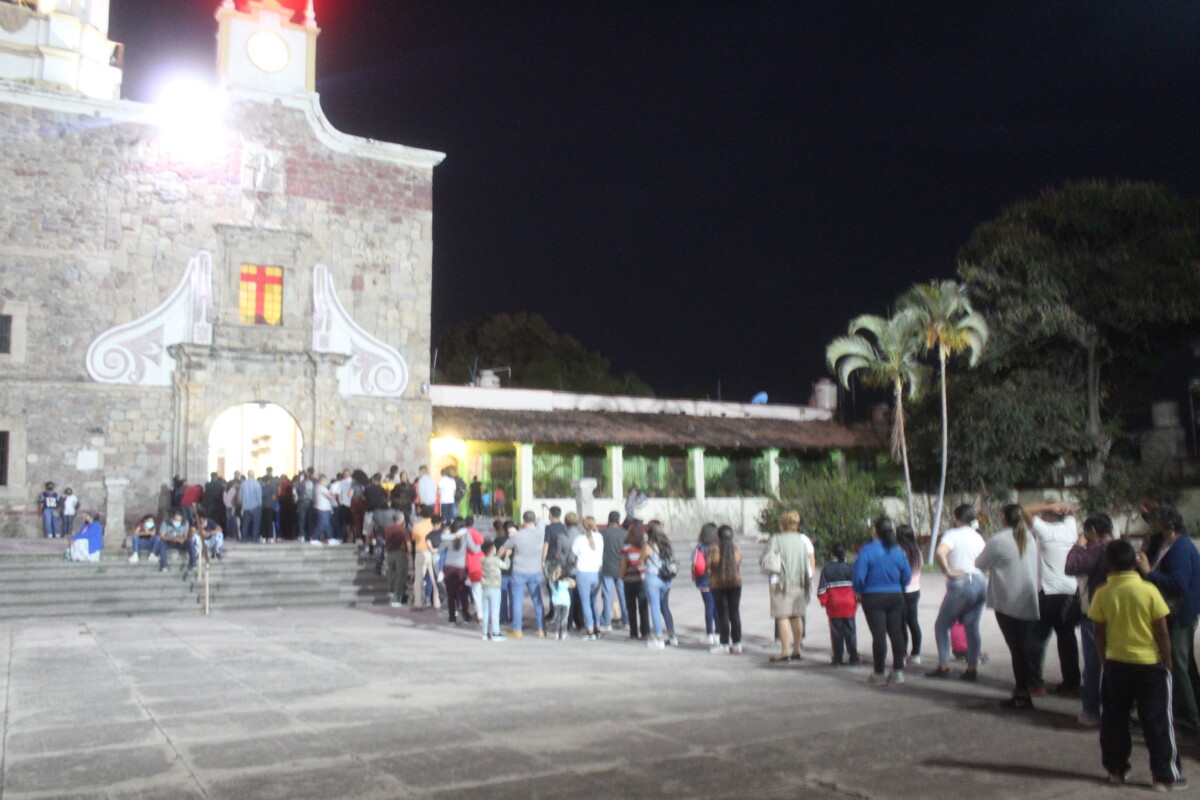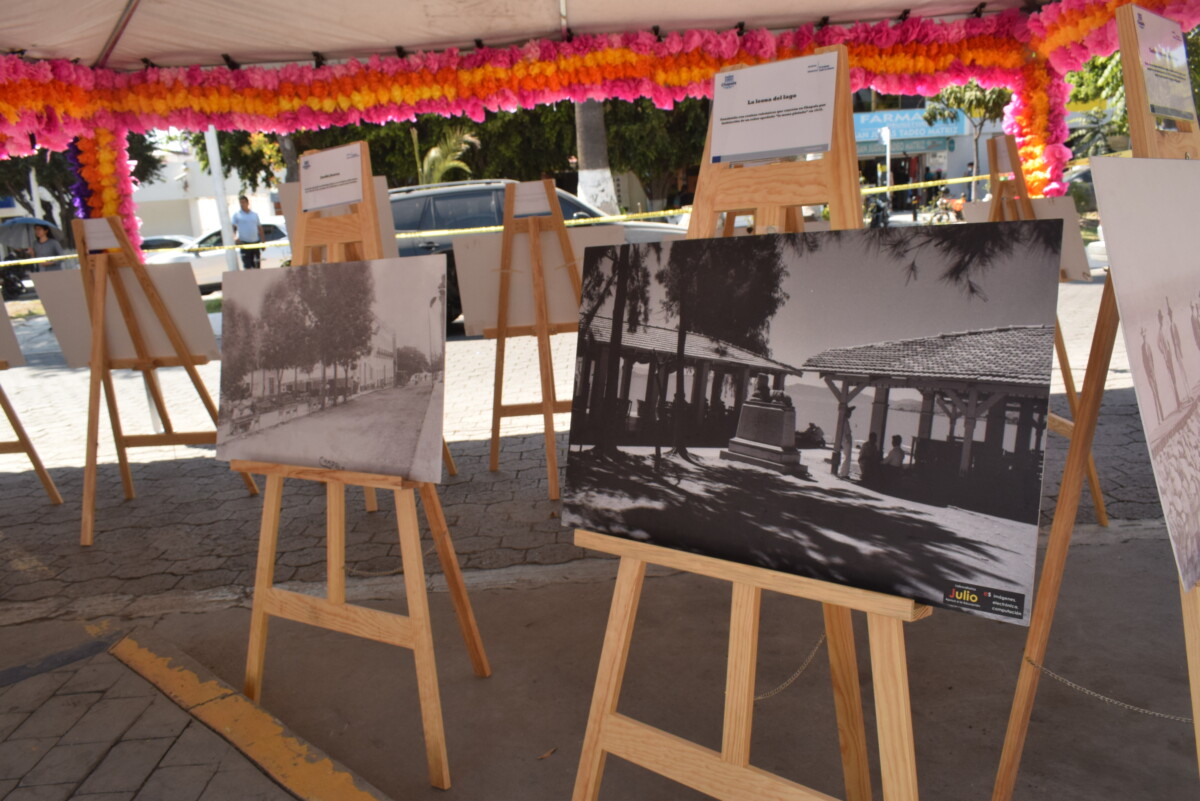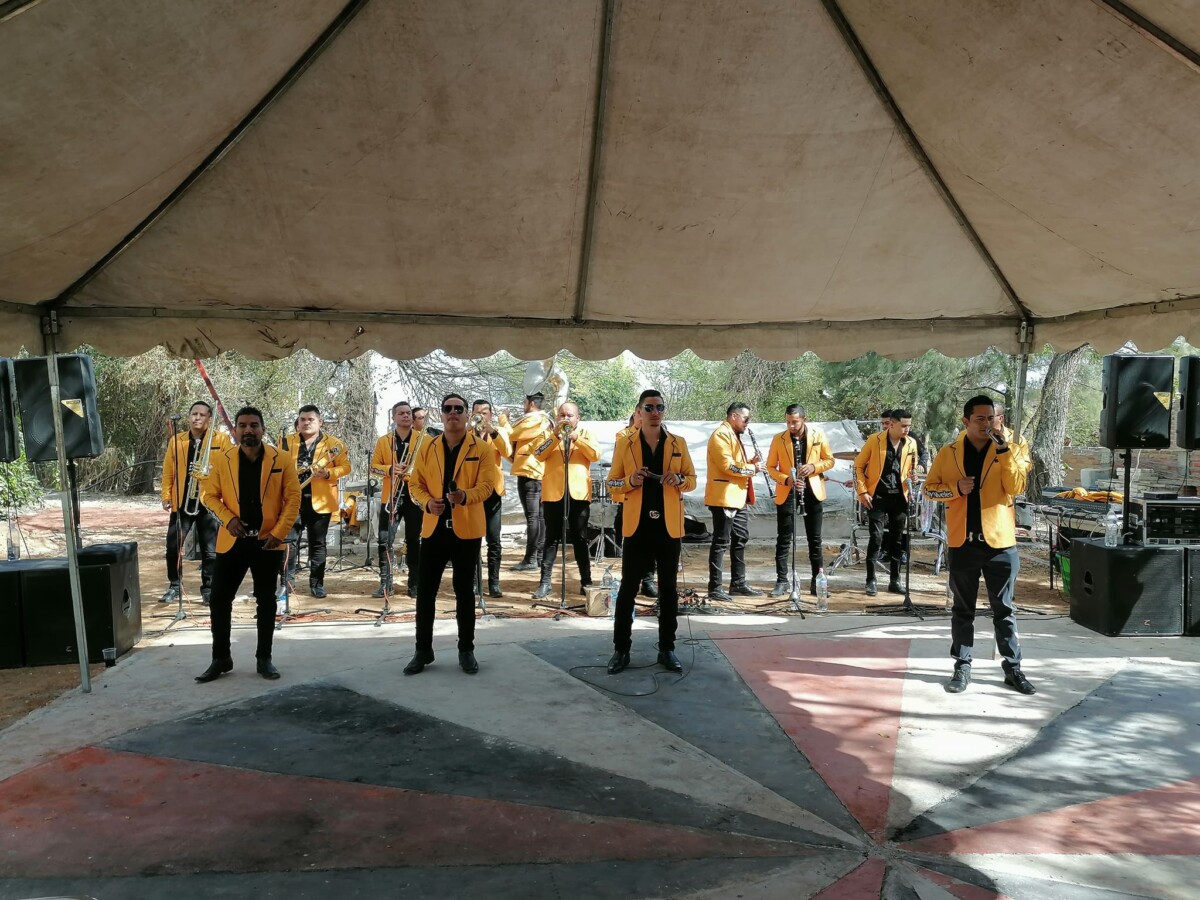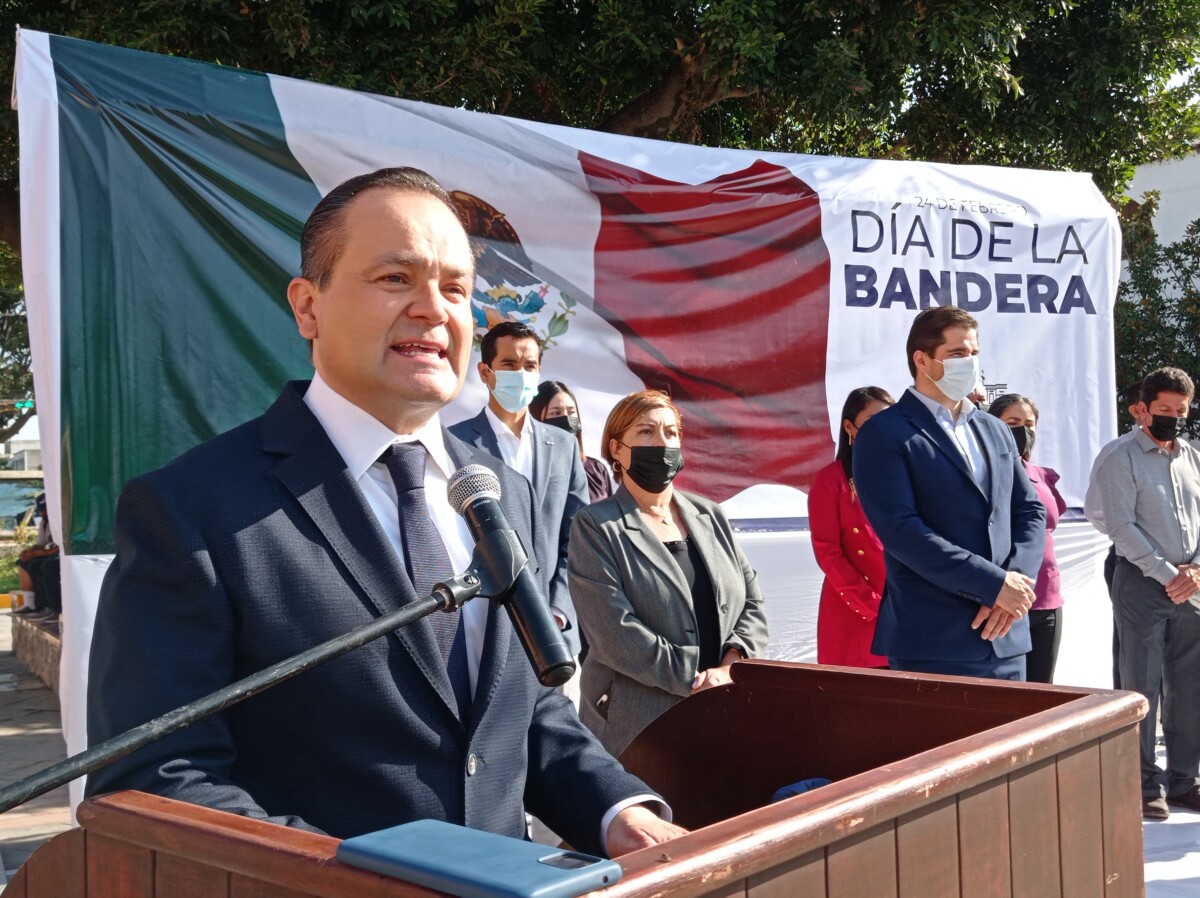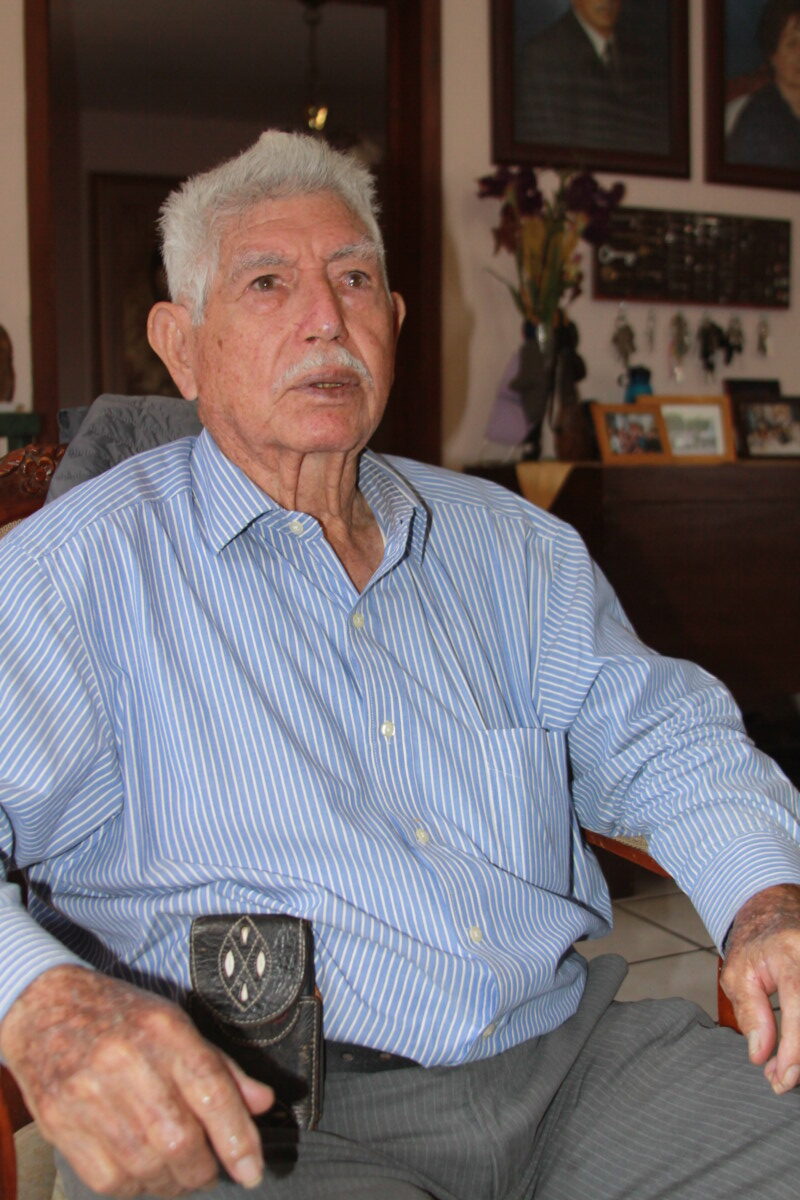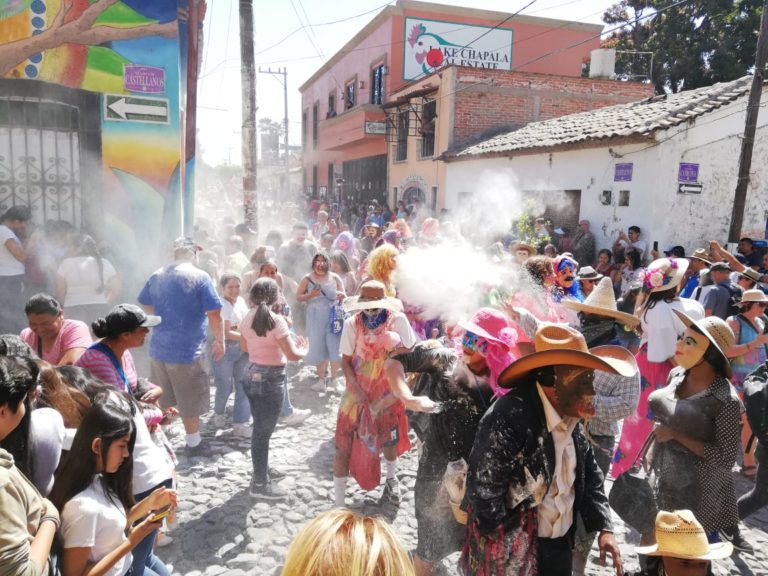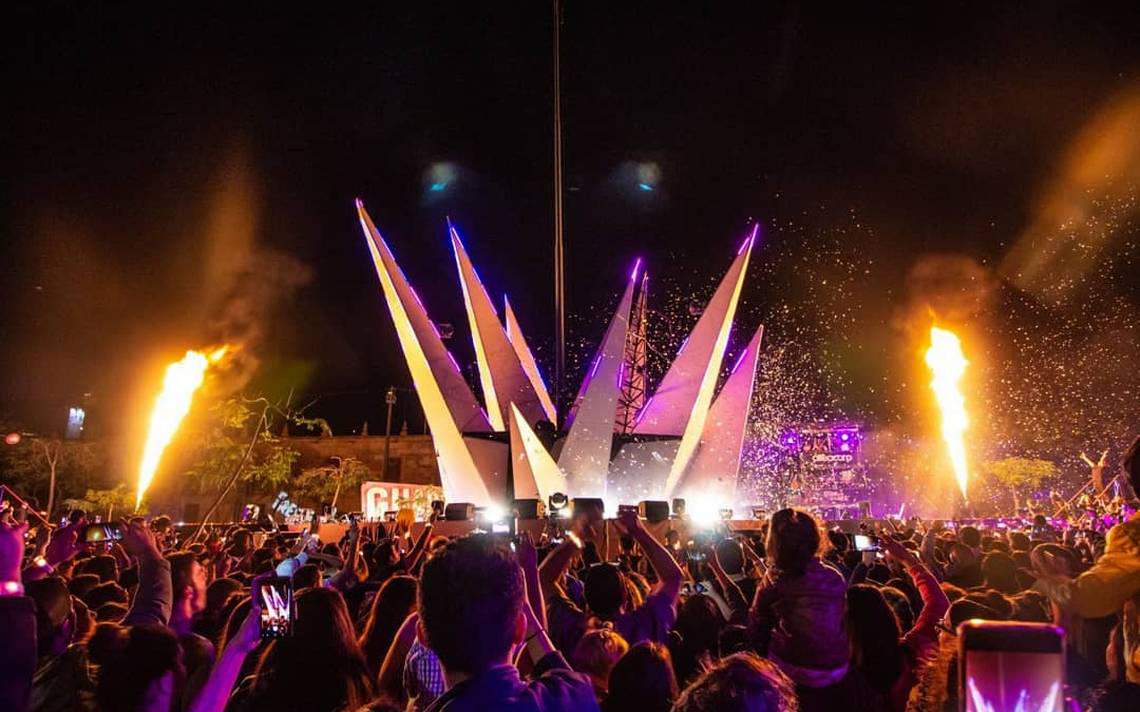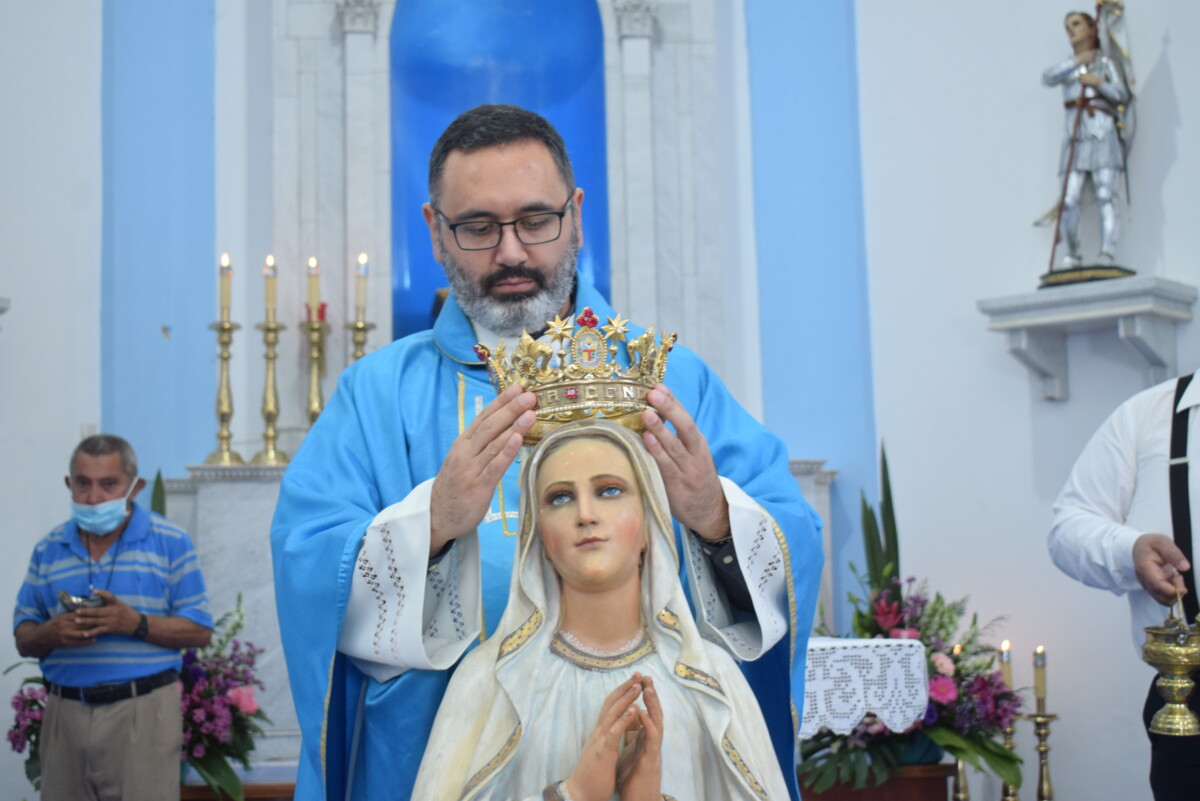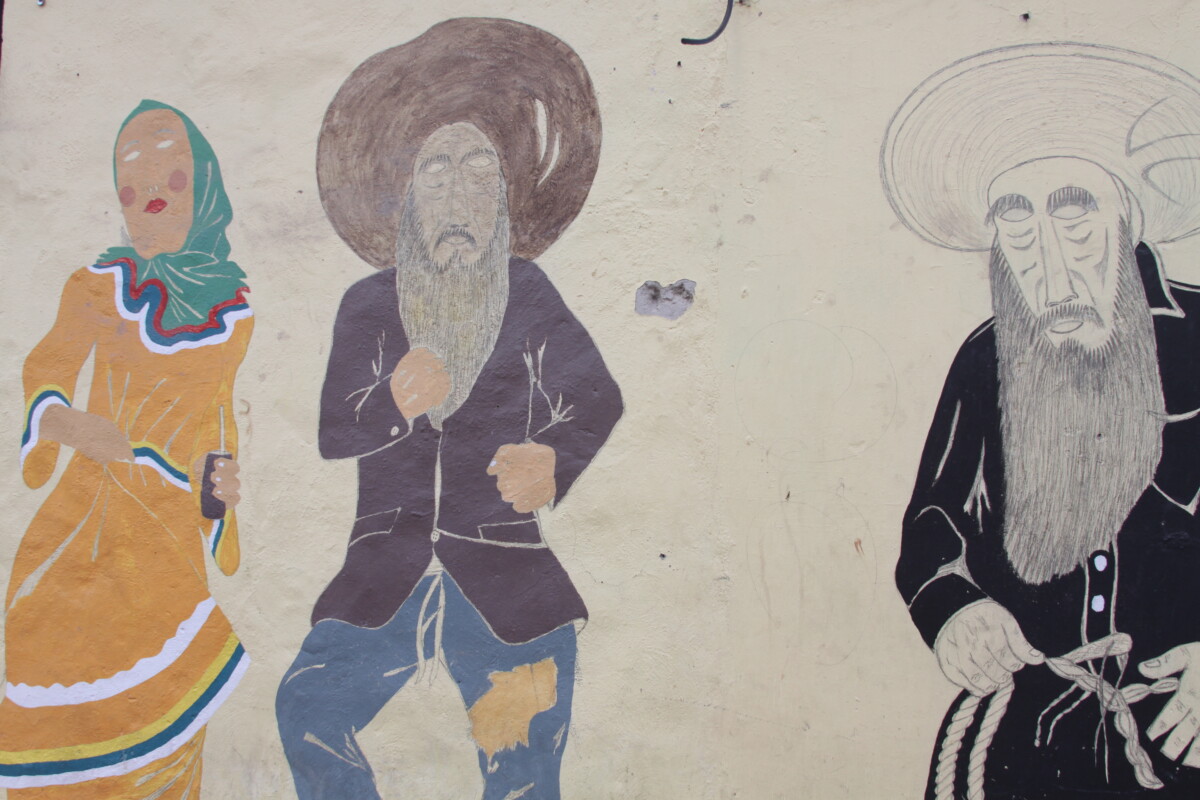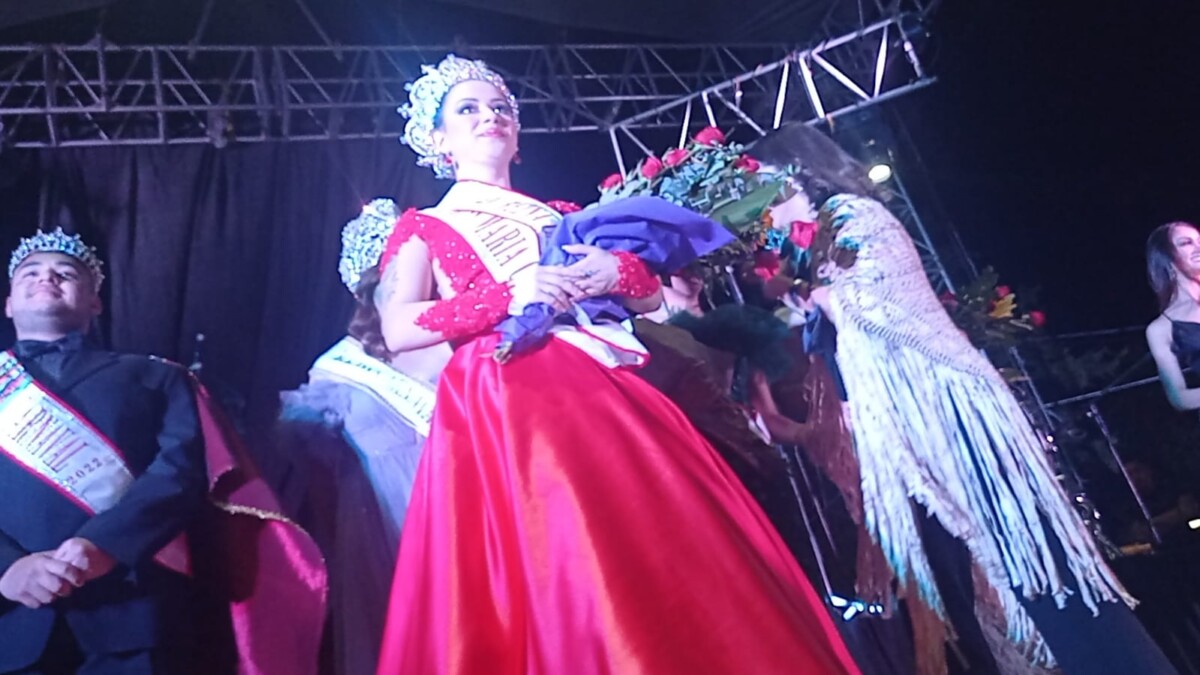tradiciones
Reúne a cientos de fieles la imposición de ceniza en Ajijic
Fue tanta la afluencia de fieles que, a las 8:00 de la noche la fila de personas esperando la imposición de la ceniza salió de la parroquia y llegó hasta el cruce de las calles Marcos Castellanos con Guadalupe Victoria. Foto: Sofía Medeles.
Sofía Medeles.- Cientos de ajijitecos asistieron a la parroquia de San Andrés Apóstol para la imposición de la ceniza el pasado 2 de marzo, Miércoles de Ceniza. Personal de la notaría comunicó que hubo bastante afluencia de gente en los cuatro horarios y que el día transcurrió sin incidentes.
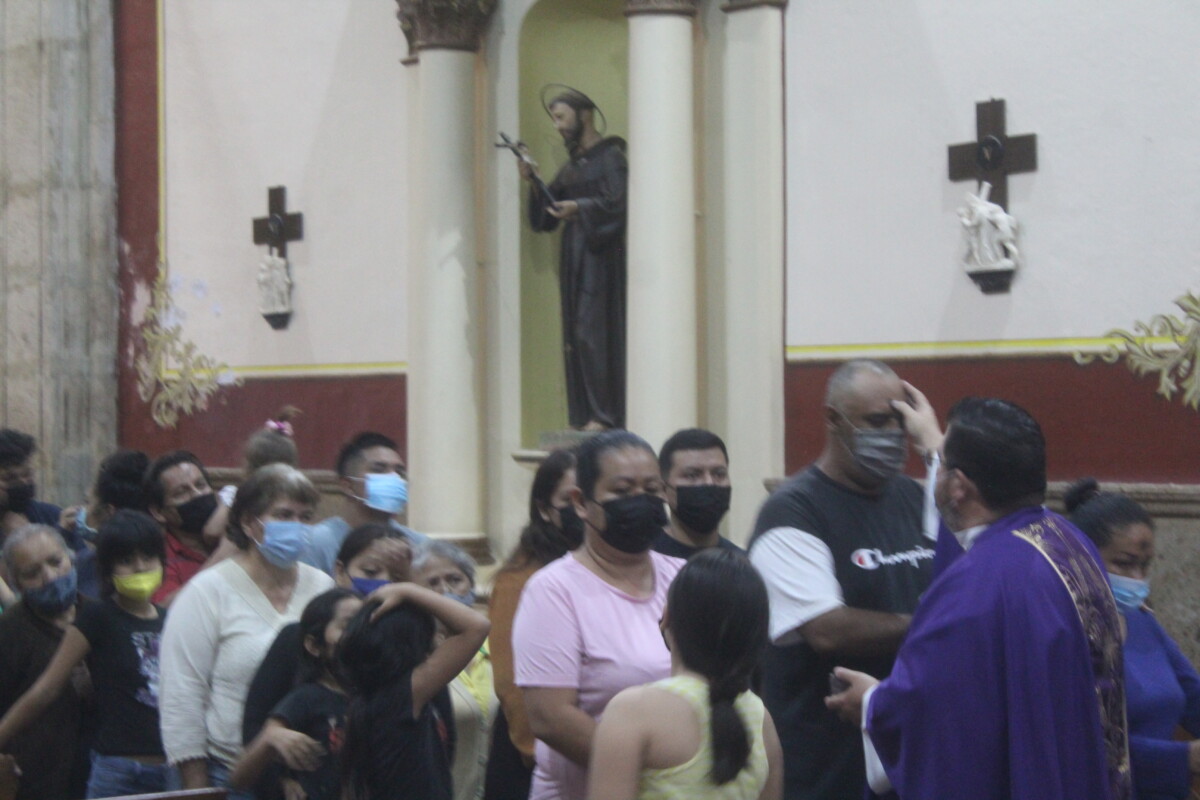
El padre Carlos Alberto fue el encargado de hacer la última imposición de ceniza el pasado 2 de marzo. Foto: Sofía Medeles.
La misa de las 8:00 de la noche fue la que recibió más fieles. La fila de más de 300 personas se extendió hasta las afueras de la iglesia, llegando incluso al cruce de Marcos Castellanos con Guadalupe Victoria; sin embargo, la fila avanzó rápidamente.
Rememoran el Chapala de antaño durante el carnaval
La muestra estuvo integrada por 21 fotografías tomadas a finales de 1800 y principios de 1900. Foto: Jazmín Stengel.
Jazmín Stengel.- En el marco de los festejos del Carnaval de Chapala 2022, la dirección de Cultura y el Archivo Histórico presentaron “Chapala es Tradición”, una muestra de fotografías antiguas del municipio.
La exposición duró del 26 de febrero al primero de marzo junto a la plaza principal de Chapala y estuvo integrada de 21 fotografías históricas tomadas entre los años de 1872 y 1900, pertenecientes a las 85 obras resguardadas en el Archivo Histórico de Chapala.
Las imágenes originalmente, en su versión digital se encuentran en la base de datos de la Fototeca Nacional. Sin embargo, las impresiones fueron donadas en el 2017 por Laboratorios Julio y los Hijos Ausentes, con el afán de rescatar las escenas más antiguas y relevantes del municipio, así como conservar una fototeca en Chapala.
Esta colección de fotografías antiguas se planea ser exhibida en las Casas y Centros Culturales de las delegaciones según la temática cultural que destaca en cada población, aseguró Alberto Portillo director del Archivo Histórico. Sin embargo, aún no se definen las fechas.
Bands to play to liven up charro events during Carnival
Banda Auténtica de La Barca, will entertain the crowd during the closing of carnival, March 1, 2022. Photo: La Barca Authentic Band
Sofía Medeles (Ajijic).- The Association of Charros will celebrate the Carnival of Ajijic, from February 27 to March 1, 2022 with equestrian and bull roping, riding, and tying events enlivened by musical groups in the charro ring.
Ernesto Perez Reyes, the current president of the association, extended an invitation to the general public to attend the events. Tickets will be sold at the box office and the events will begin at 4:30 in the afternoon.
On the first day of the carnival, Sunday, February 27,2022, the groups that will perform will be Banda Perla Azul de Cuexcomatitlán, La Equidad Norteña, and Banda Estrellas del Lago. Tickets will cost 150 pesos per person.
On Monday February 28, Banda Nueva Casta and Santiago Guzmán y su Astro Norteño will perform. Tickets will cost 100 pesos. Closing the carnival at the charro ring on March 1 will be Banda del 70 and Banda Auténtica de La Barca. The cost of tickets for this final celebration is 180 pesos per person.
Perez Reyes asked that attendees wear masks at all times, and to refrain from going if they have symptoms of Covid-19.
«In this ongoing pandemic situation, the guidelines and restrictions will be respected. It is this observation of COVID protocols that has allowed us to celebrate the carnival, albeit responsibly,» he concluded.
Translated by Rebecca Zittle
The mayor urges all to foster peace on Flag Day
The Mayor of Chapala, Alejandro de Jesús Aguirre Curiel, made a call to the citizens to work for a culture of peace.
Editor – The mayor of Chapala, Alejandro de Jesús Aguirre Curiel, urged the citizens to work for a culture of peace that leaves behind violence and useless bloodshed during the commemoration of Flag Day, on Thursday, February 24.
The municipal president, accompanied by directors and councilors of the administration, stressed that we must «work for a culture of peace that leaves behind violence and useless bloodshed. May the National Flag not only be a symbol that identifies us in the world, but a symbol that unites and brings us together.»
During the civic act that took place in the square located in front of the City Hall building, elements of the Municipal Police Department hoisted a large Mexican flag on its flagpole that unfortunately did not wave in the wind, because the air was still on that sunny morning.
Alluding to the emblematic colors of the national flag, the mayor spoke of recovering the green of hope and working to make it meaningful. He said, «Let’s move from conformism to action» and pointed out that we have to recover unity as one people and be as one family.
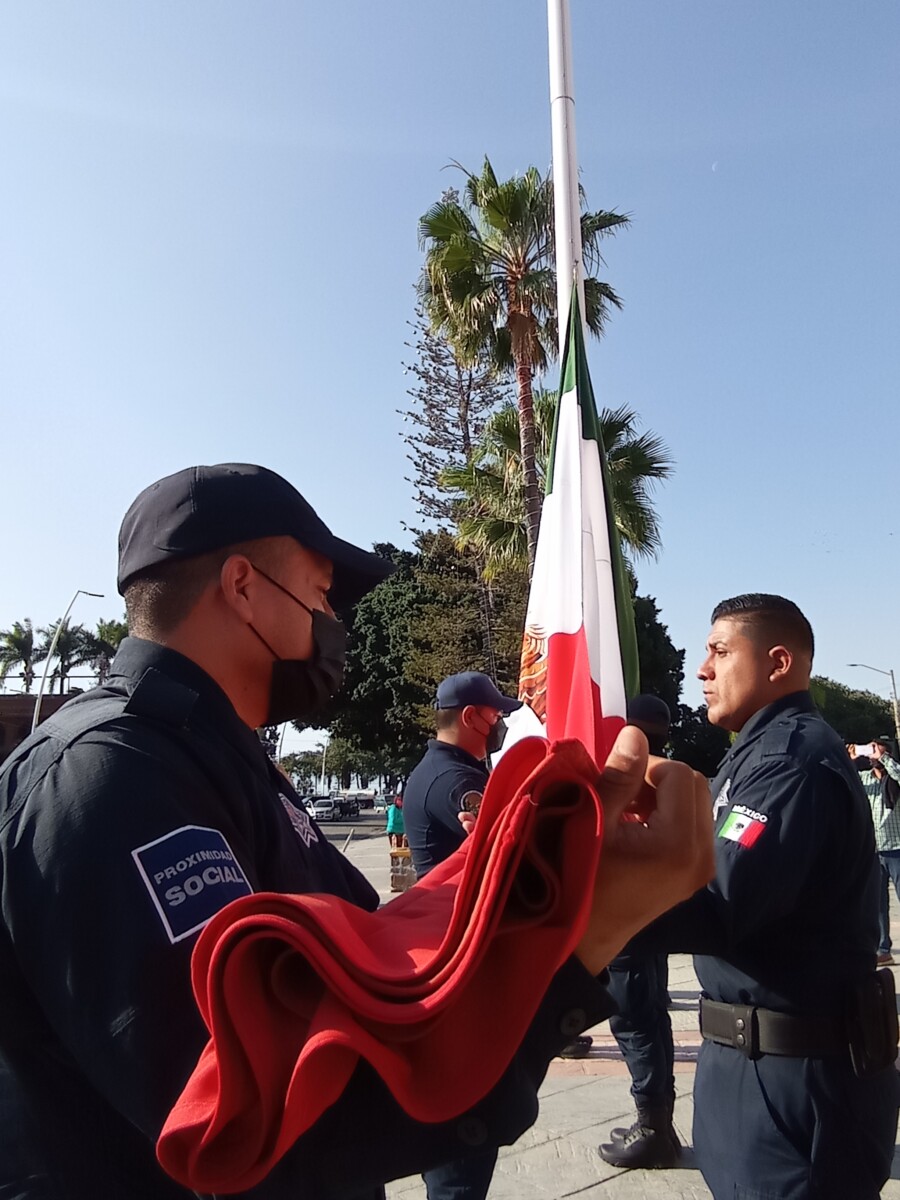
Elements of the Municipal Commissariat raised a large Mexican flag on its flagpole, unfortunately it did not wave in the wind, as the air was still on a sunny morning.
He also called on his team to commit themselves to fulfill the obligation they have with the people of Chapala and to bring unity internally and externally, in addition to seeking the balance and unity that the citizens have asked for so much.
«We need to know that the task we perform is very short and when we least expect it, we will be leaving. Let’s not get carried away by ambitions, let’s not get carried away by bad advice. The administration needs committed people…», he said. Likewise, the mayor reiterated his commitment and gratitude to the citizens for having entrusted him to lead the administration for the second time.
The municipal president ended his speech with the desire that the colors of the National Flag once again symbolize peace, magic, the flavor of traditions, culture, gastronomy and the greatness of being Mexican.
Translated by Colleen Beery
Lakeside Chronicles
Marcos Cortez Gómez is a great conversationalist about the memories he keeps of Jocotepec. Photo: María Reynozo.
María del Refugio Reynozo Medina (Jocotepec).- Jocotepec is one of the great loves of Marcos Cortez Gómez. In his living room with his mementos hangs a copy of the oath he swore to the patron saint Señor del Monte or Lord of the Mountain, for whom he has a special fervor. Cortez Gómez is a member of the Guard of Honor.
There are also portraits of his parents and him and his wife Juana de la Torre, who opened the first clothing store in Jocotepec in 1965. They had seven children, 15 grandchildren and 10 great-grandchildren.
Nearing his ninetieth birthday, Marcos remembers the Jocotepec of his youth and one of the celebrations, the carnival for the bullfights of bygone days. “It was a most beautiful celebration,» he says, smiling nostalgically.
The carnival festivities began on Saturday and ended on Tuesday. Every day began with the mañanitas, the popular Mexican song sang on special days like saint days or birthdays, with a band playing in the streets. The invitation to the carnival began at eleven o’clock in the morning. This was a parade of the riders who were going to participate in the bullring with some tame bulls in the middle of the procession. The parade ended at the bullring. This parade was traditionally called the “toro de once” or bulls of eleven, so-called because the parade started at 11:00 with eleven bulls. They held tryouts to see which bullfighters were going to fight in the afternoon. At the bullring they welcomed bullfight sponsors from Zacoalco, Navajas, Ahuisculco, San Pedro and Zapotitán.
The famous Ignacio Zaragoza Band from Jocotopec played classical and popular music. The promoter, Rodolfo García Ibarra allowed his house to function as a rehearsal hall. The evenings ended with a serenade and dance.
At the serenade the women would turn one way and the men the other. There was an exchange of flowers or decorated, perfumed bouquets between girls and boys. Cortez Gómez remembers that while the band played El Papaqui, they would break the eggshells stuffed with confetti on the girls and their friends and they would throw streamers and confetti at them.
The queen of the carnival was crowned on the last day. The municipal president or the group of charros (horsemen) selected the lucky girl and her two princesses. All were accompanied by their escorts. The royal court made their entrance to the bullring in a carriage, went around the ring and then settled in their box of honor that had been prepared for them. They awarded the participants bands made with colored ribbons. Cortez Gómez was given a sash, and he had great pleasure showing off that trophy to his friends and the girls.
The bullfights were at four o’clock in the afternoon. Sometimes the bullfighters came from outside Jocotopec and at other times, spontaneous bullfighters appeared and at the moment they ventured into the ring they became sometimes not so lucky bullfighters. The güero (blonde) Loza, was one of the bullfighters originally from Jocotepec.
At the bullfights there was no lack of clowns with their jokes. One clown named Candelario, came from Pueblo Nuevo. Another clown was nicknamed La rata (the rat). The clowns had a great ability to compose jokes on the spot, Cortez Gómez still remembers:
The girls of Jocotepec, they are like the otate flower.
Very good at making boyfriends, but bad at using the metate [to grind corn].
Another joke was:
Don Fulanito de tal is a very brave man,
He keeps looking at his leg from underneath the platform.
Once the festivities of Shrove Tuesday [Fat Tuesday] were over and Ash Wednesday arrived, there was no more talk of bullfighting or festivities. They said goodbye to joy as bullring wooden beams were dismantled.
Cortez Gómez likes dancing and singing very much. He sometimes shared meals and songs with his friend, the singer Jorge Valente. They loved each other like relatives, even though they were not. The composer Gilberto Parra was his cousin.
Don Marcos is a great conversationalist who also composes music while narrating a story. He raises his voice to sing.
I’ll wait for you under the camichin trees, where the trucks go by
To go far away to unite our hearts.
I swear to you that our love will remain forever.
Cheer up chaparrita, you’ll see that you won’t regret it.
He has has written three ranchera songs that he keeps for himself.
he keeps remembering and raises his voice to sing with emotion:
Tonight, with the moon I sing you my illusions,
I swear to you that my love is with good intentions.
«I am very grateful to God for having let me be born here and live here, in the land of my love,” he affirms without concluding, because Don Marcos Cortez Gómez has many memories that he would not finish telling.
Translated by Nita Rudy
Ajijic Carnival will maintain the same route and schedule
During the Shrove Tuesday parade, the sayacas, the main character of the festivities, throw flour and confetti at the spectators. Photo: Carnival 2019 (Archive).
Sofía Medeles(Ajijic).- Despite the modifications imposed by health authorities to combat the Covid-19 pandemic, the Ajijic Carnival will keep the usual schedule and route of the celebrations.
Acting Delegado Maximiliano «Max» Macías Arceo announced that there will only be three days of festivities: the parades on February 27 and 28 and the Shrove Tuesday parade on March 1.
On Sunday and Monday, the sayacas, the main character of the festivities, will leave at 11:00 a.m. from the Campos family home, located on Hermenegildo Galeana Street between Zaragoza and Ocampo. They will take Zaragoza, Álvaro Obregón and Ocampo streets until they reach La Floresta in the east of the town. This year the Charros Association decided to omit the traditional «toro de once» and the reception or refreshment to avoid crowds.
The Shrove Tuesday parade will also begin at 11:00 a.m. crossing the town on Ocampo, passing by the «Seis Esquinas» square, and taking Hidalgo to end at the main square of Ajijic.
Max Macías said that at least ten floats will participate, without ruling out the possibility of others joining in.
«Few signed up, but some let me know of their participation informally. The parade floats will be arranged according to the order of registration to maintain order,» he added. In addition, he asked parade attendees to wear masks, as well as to try to disperse as soon as the parade passes.
«The Board of Health of Jalisco put restrictions on events and far from ignoring them, we must make an effort to follow them. We are reviving traditions little by little and we want to do things right», said Max Macias
Translated by Patrick O’Heffernan
Regresa el festival GDLuz 2022 a Guadalajara
Serán dos kilómetros de iluminación los que podrán disfrutar los visitantes. Foto: Cortesía.
Redacción.- La ciudad de Guadalajara celebrará del dos al cinco de marzo el festival GDLuz en su quinta edición, como parte de los festejos del 480 aniversario de la fundación de la capital del estado de Jalisco.
La celebración se realizará a lo largo de dos kilómetros del centro de la ciudad, desde el Mercado Corona hasta el Hospicio Cabañas, donde las personas podrán disfrutar de videomappings, espectáculos multimedia, iluminación ambiental, música en directo, instalaciones artísticas y performance, en horarios de 08:00 a 11:30 de la noche.
El festival contará con seis accesos principales ubicados en el Instituto Cultural Cabañas, Palacio de Gobierno, Paseo Fray Antonio Alcalde y Mercado Corona.
Algunas vialidades alrededor del Centro Histórico se cerrarán a partir de las 5:00 de la tarde, como las siguientes: avenida Hidalgo, calle Morelos, y Pedro Moreno, en su cruce con González Ortega; además de la avenida Hidalgo, desde Contreras Medellín hasta Calpulalpan, en el lado poniente.
En el lado sur las vialidades que se cerrarán serán desde la Calle Juárez hasta calle Huerto y al norte, la calle Juan Manuel, desde Paseo Fray Antonio Alcalde hasta Dr. Baeza, además de Independencia desde Paseo Fray Antonio Alcalde hasta Calpulalpan y finalmente de Carriles extrema derecha, desde Avenida República, hasta Calle Cabañas.
Our Lady of Lourdes is celebrated in her namesake neighborhood
Our Lady of Lourdes during her coronation Feb. 11 in her neighborhood chapel.
Jazmín Stengel.- This year, the image of the Virgin of Lourdes got to know her neighborhood in depth. Due to the cancellation of the religious festivities and processions because of the pandemic, neighbors received the visit of the venerated image in their homes Feb. 11.
Since the usual procession to the church of St. Francis of Assisi was prohibited, the guard chose to go through the houses and streets of their neighborhood. This gave people an opportunity to enjoy the presence of Our Lady of Lourdes in an intimate setting.
“We were not going to stand idly by,” said Carmelita, who every year helps organize the carnival in the parking lot outside the Chapel of Our Lady of Lourdes, where the feast was usually held.
“We told the neighbors that they could not come in the procession, but that we would pass with the statue to their homes.” Said Carmela’s husband. They all ran to their homes to receive the sacred image. People liked this very much, since “it was something beautiful and unforgettable,” said a young neighbor.
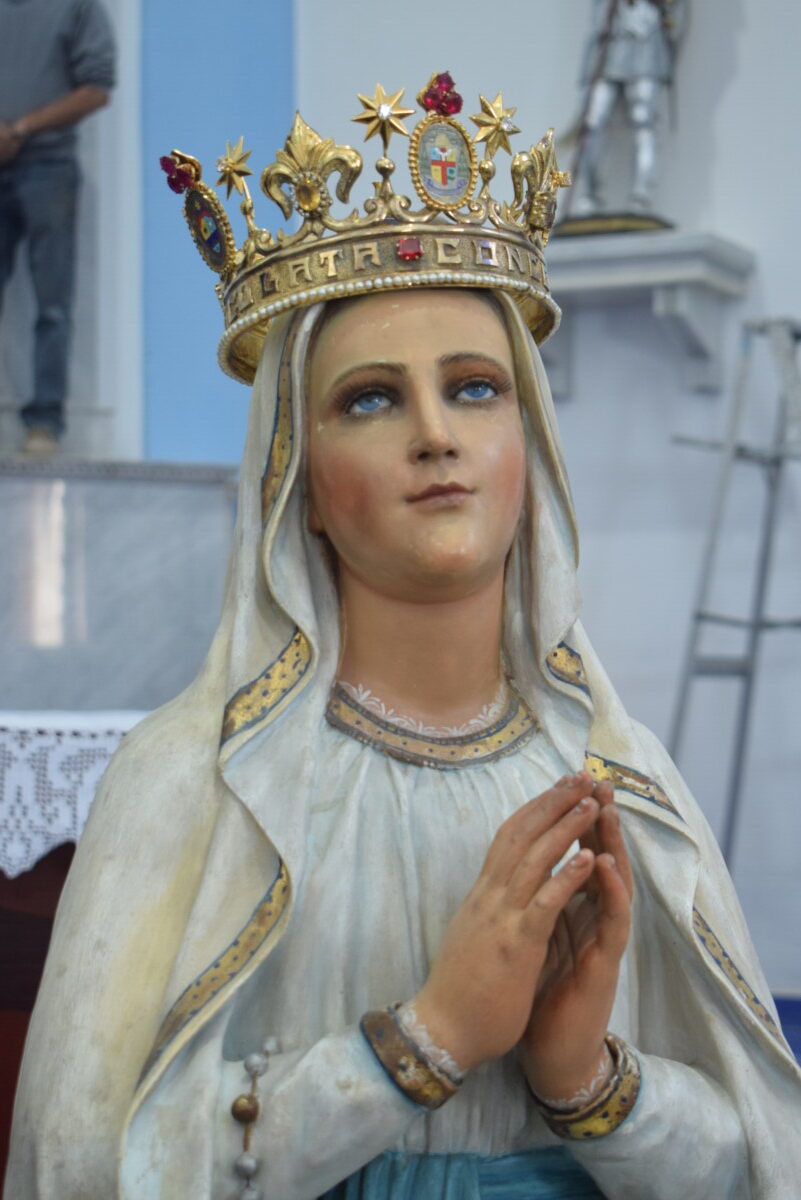
After she was crowned, parishioners thanked her for the miracles she has granted them.
The coronation of Our Lady of Lourdes usually takes place at 6 a.m. However, with the current restrictions and at the request of the priest in charge, it was postponed until the Mass of “the sick,” at noon. During that Eucharist, the people gave thanks for miracles the Virgin has granted them, kissing and caressing her once with her crown on.
The party used to last all night, with fireworks, rockets, drinks and lots of food. But that also was not possible this year. That did not change the faith, nor the loyalty of her parishioners who escorted her throughout the day until the removal of her crown, at almost at 10 p.m.
The crown was donated 50 years ago, according to the neighbors, by inhabitants of the French colony who helped build the Chapel of Lourdes in 1940, coordinated by Guillermo González Hermosillo y Brizuela.
Translated by Mike Rogers
Lakeside Chronicles: The sayaco is the inner child
Front wall of the Romero Pérez brothers’ home is illustrated by masked Sayacos, created by Aarón, one of the brothers. Photo by: María del Refugio Reynozo Medina
María del Refugio Reynozo Medina (Ajijic).- José de Jesús Romero Pérez still has the first hermit-like sayaco mask he made 15 years ago. The dark brown, immobile, sharp face is made of copal, a wood that he brought from the hills. The hollows of the eyes and the slightly open mouth are decayed. The eyebrows, beard and straw-colored mustache are made of a fiber obtained from coffee sacks.
Making a mask can take José de Jesús about two and a half weeks, working in the afternoons after his usual workday. Although he does not make them for commercial purposes, the unique masks which bear his signature, can sell for up to three thousand pesos. The masks that depict women (sayacas) are colorful, with embossed or painted eyelashes and eyelids splashed with glitter. Once carved with a chisel, vinyl paint is used to outline the eyebrows, eyes and eyelashes. The lips and cheekbones are painted deep red circles.
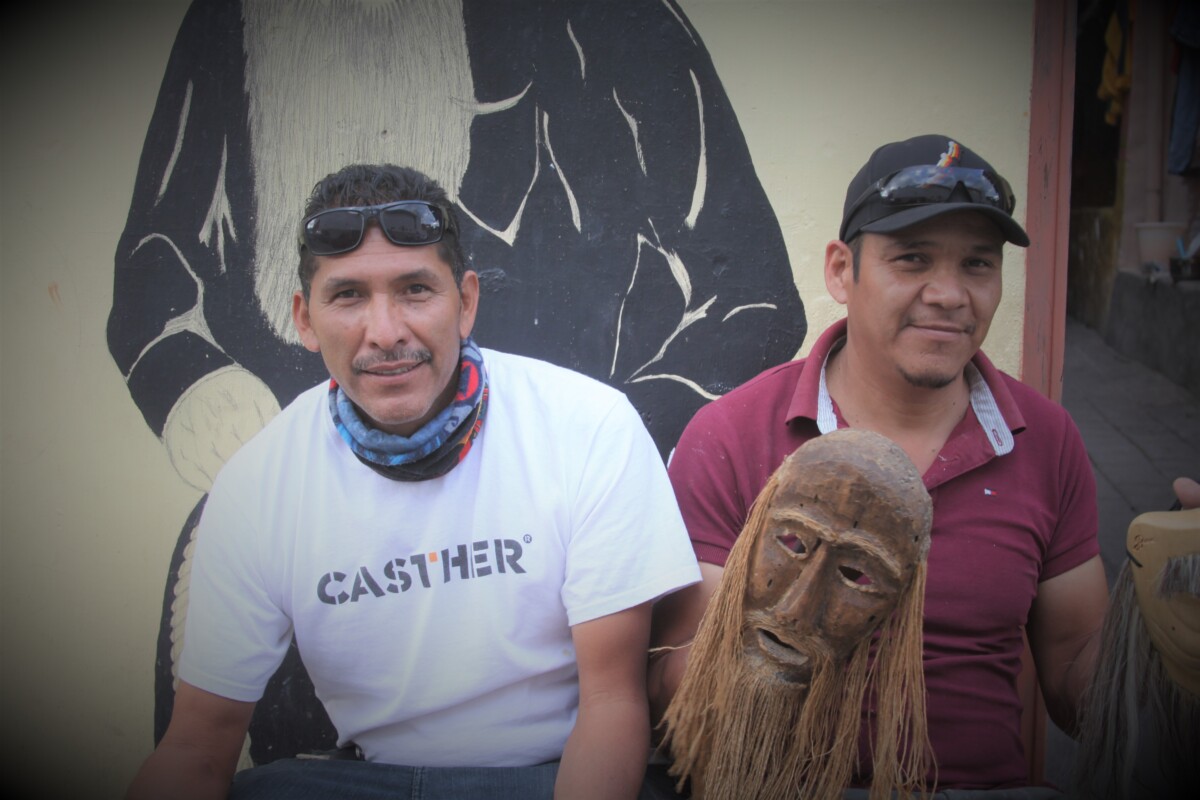
Abel and José de Jesús Romero Pérez grew up watching the sayacos and chasing them in many celebrations. Photo by: María del Refugio Reynozo Medina
The male masks of the sayacos are made of natural light or brown wood, with long beards, bushy eyebrows and moustaches made of horsehair. Romero Pérez’s masks are instantly recognizable. The images flow, as he chisels each feature. A face will emerge unexpectedly from the wood. He knows perfectly well the type of wood needed to design each face. In addition to wood from the native copal tree, he uses native tecomaca wood, which is soft and light.
He has sold eight masks. Buyers do not necessarily wear them in parades. They are purchased by collectors as unique pieces, inspired by the sayacos.
The Romero Pérez brothers Abel, José de Jesús, Gaspar, José, Aarón and Modesto, each year transform themselves into sayacos mainly to inaugurate the carnival. They also attend other celebrations throughout the year.
On a wall outside their home there is an unfinished mural painting drawn by Aarón. The image shows a dancing female sayaca dancing wearing a yellow dress trimmed with colored ribbon and brown booties, accompanied by two male sayacos. One is dancing wearing a brown jacket, denim pants and booties. The other sayaco has a black dress with white dowels as buttons. All of them have long faces, although their appearance in the parades brings smiles and laughter.
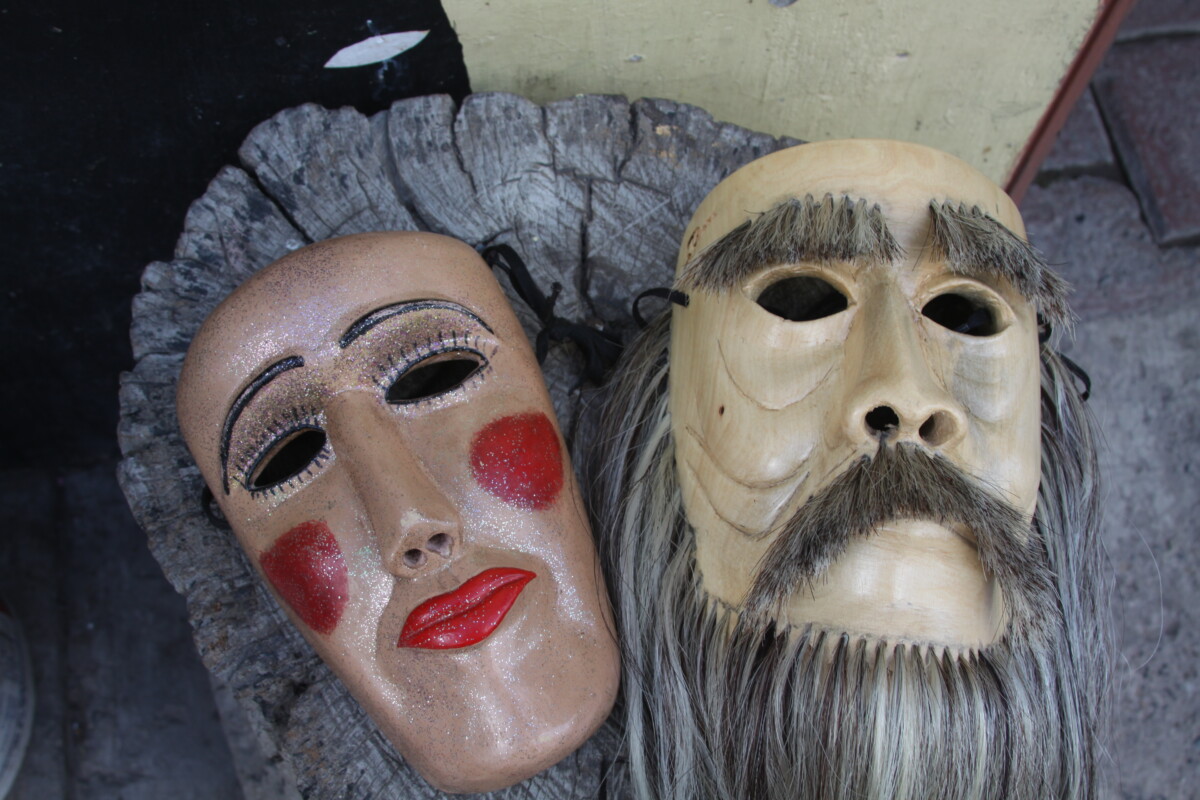
With copal or tecomaca wood, the masks made by Jesús Romero are unique pieces. Photo by: María del Refugio Reynozo Medina
“The sayaco is a very old character in the life of the people of Ajijic”, says Abel. They used to be called sayacal. Now they are called sayacas and sayacos. It is that mocking character that appears mainly in the carnival. They throw confetti and sometimes flour. Sometimes the flour is delicately smeared on their cheeks.
One of the main dances of the sayacos is called the dance of the «papaqui» which is accompanied by wind instruments. Sometimes they are invited to perform their dances at weddings or quinceañeras, the celebration of a girl’s 15th birthday. Abel remembers as a child watching the sayacos in the daily festivities. He and his siblings would race through the cobblestone streets following and teasing the sayacos amidst happy laughter.
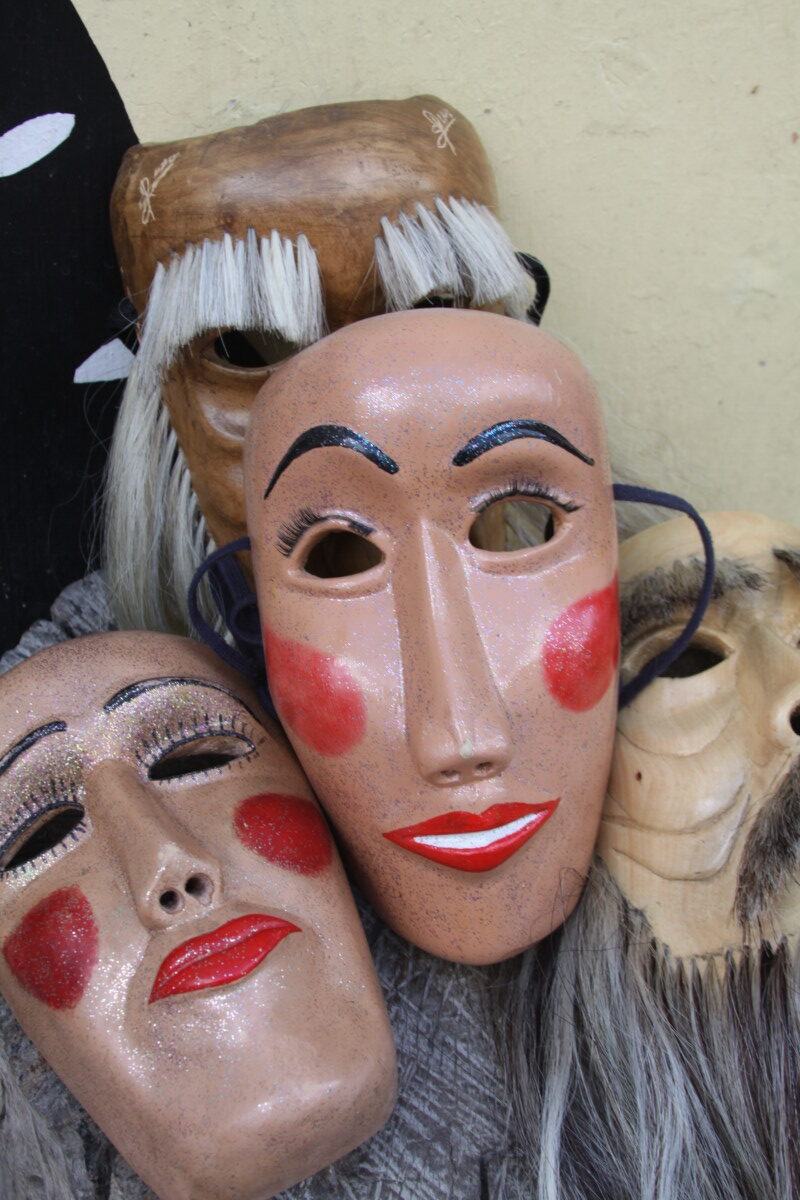
The masks of Jesus Romero Perez stamped with his signature can be worth up to three thousand pesos. Photo by: María del Refugio Reynozo Medina
The carnival parade is open to the entire population and a diversity of characters appear. The traditional attire is wooden or papier-mâché masks, sacks, shirts with dowels, booties, and hats. The sayacas wear bright printed dresses.
There is pride in being a sayaco. It is a nice, mocking, very old character who makes people laugh. The sayacos are mainly men. Even the sayacas are usually men because of the pushing, shoving, brawling atmosphere.
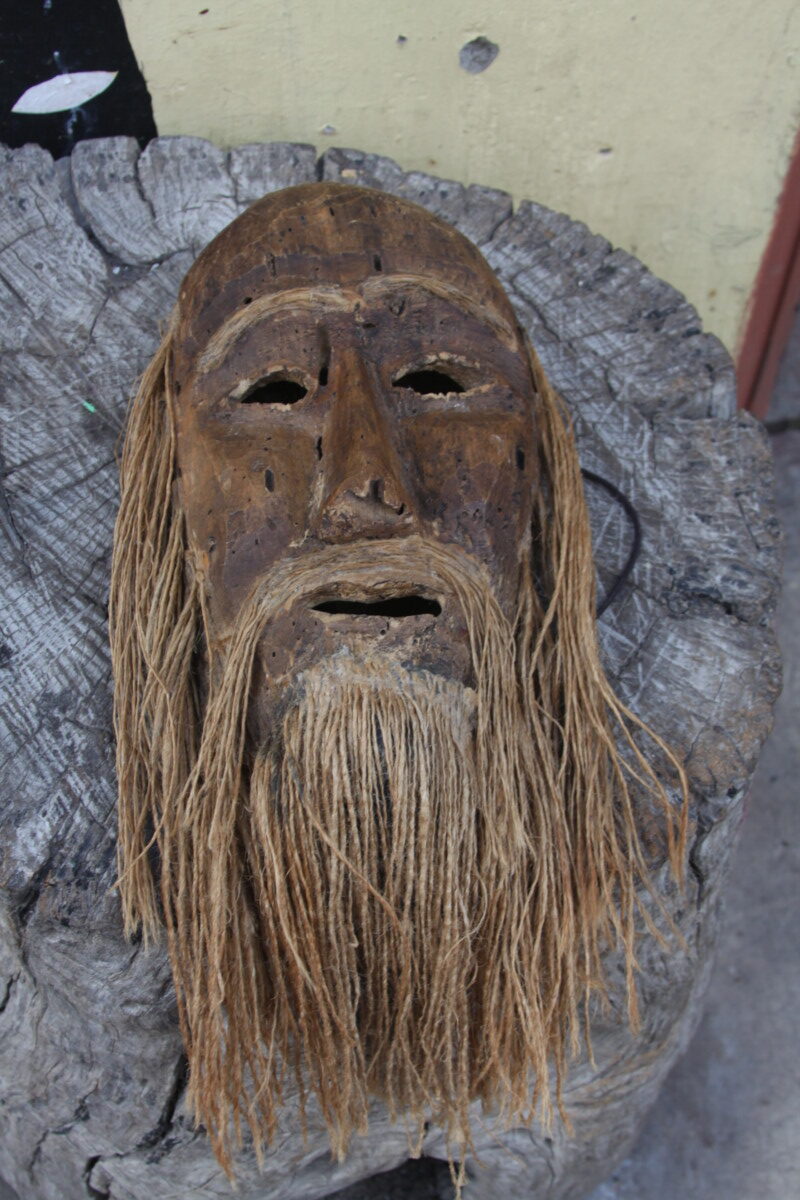
The first mask made by José de Jesús Romero Pérez was of a hermit in copal wood. photo by: María del Refugio Reynozo Medina
Behind the masks of tough men or picturesque red-cheeked women are the Romero Perez brothers. They appear in the parades and processions so that the legendary figures of the sayacos do not die and because Abel says «behind the wooden masks is the inner child.»
Translated by Nita Rudy
Coronan a María Alcalá como reina del Carnaval Chapala 2022
María Alcalá Ortiz fue coronada como la reina del Carnaval Chapala 2022 durante la noche del 25 de febrero.
D.Arturo Ortega.- María Alcalá Ortíz fue coronada como la reina del Carnaval Chapala 2022 el pasado 25 de febrero en el Lienzo Charro, J. Jesús González Gallo, de la cabecera municipal.
La reina del Carnaval 2020 – 2021, María Fernanda Ochoa Cárdenas cedió la corona a la nueva representante de los festejos, ante poco más de 300 personas; además de la presencia del alcalde, Alejandro de Jesús Aguirre Curiel quien acudió acompañado de la presidente del DIF, Erika Erín Torres Herrera.
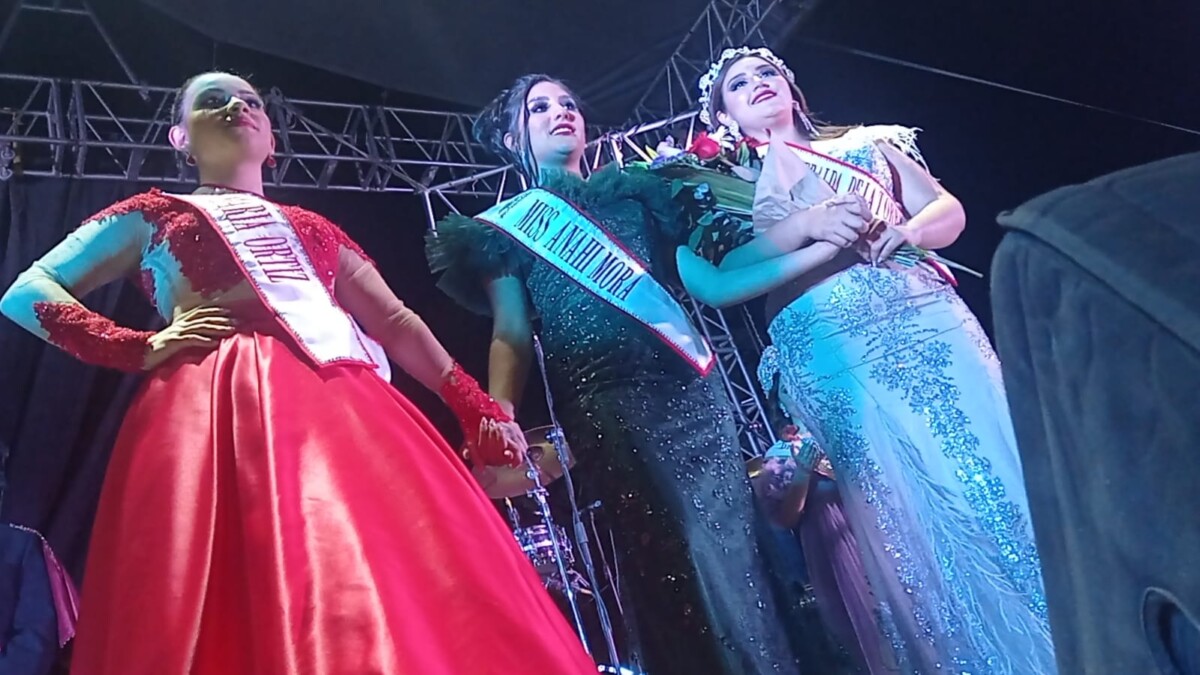
María Alcalá, Anahí Mora y Esmeralda de la Torre fueron las candidatas del certamen de este año.
Fue la noche del 25 en la que María Alcalá, Esmeralda de la Torre y Anahí Mora fueron confirmadas como las candidatas del certamen, luego de varias nominaciones que surgieron en las diferentes redes sociales.
Luego de la presentación y dos pasarelas en el que las participantes lucieron un atuendo casual blanco y uno de noche en el que María lució su belleza en un vestido rojo que; el jurado deliberó a favor de la nueva reina de la fiesta más grande de Chapala.
© 2016. Todos los derechos reservados. Semanario de la Ribera de Chapala
